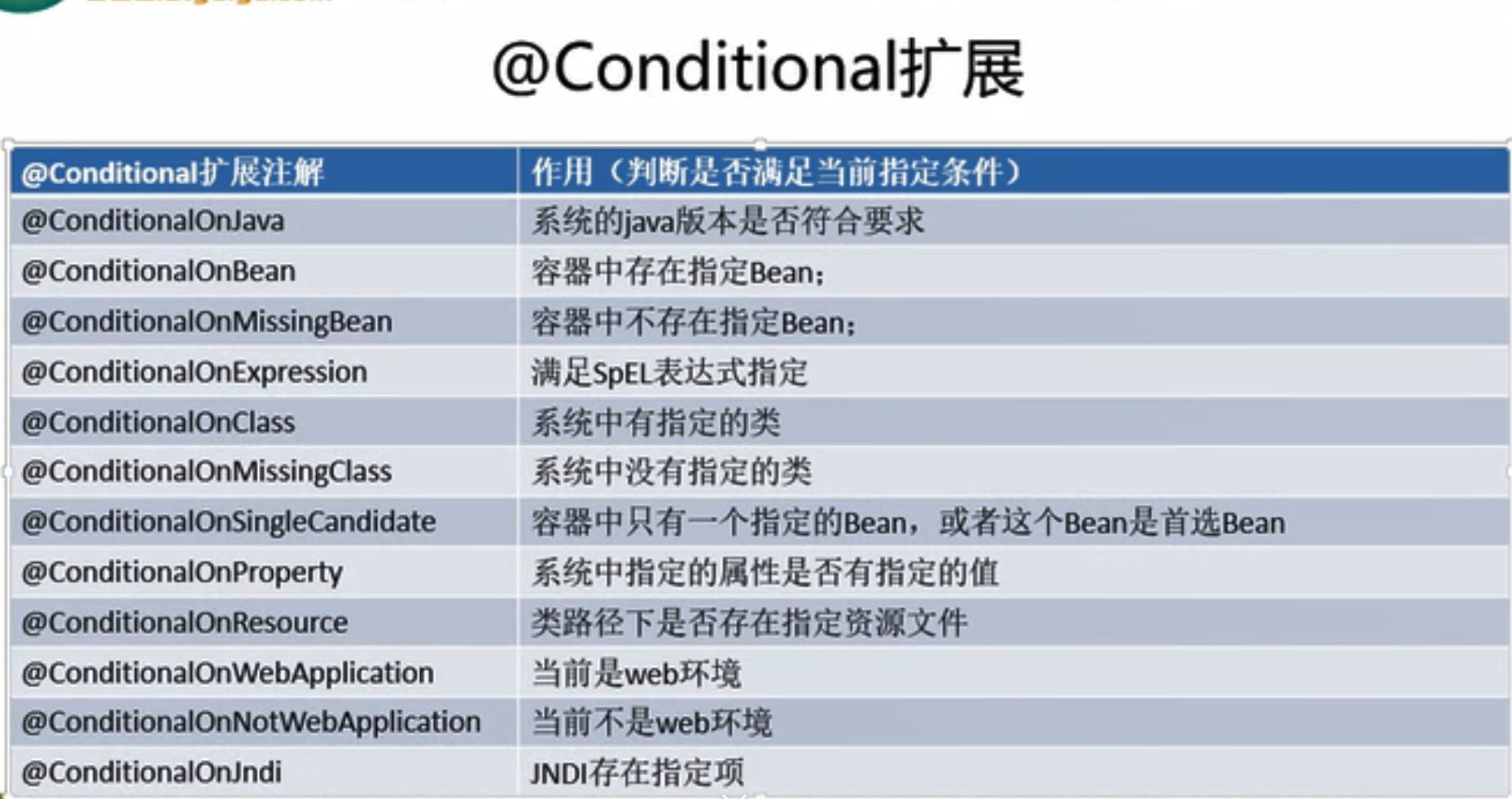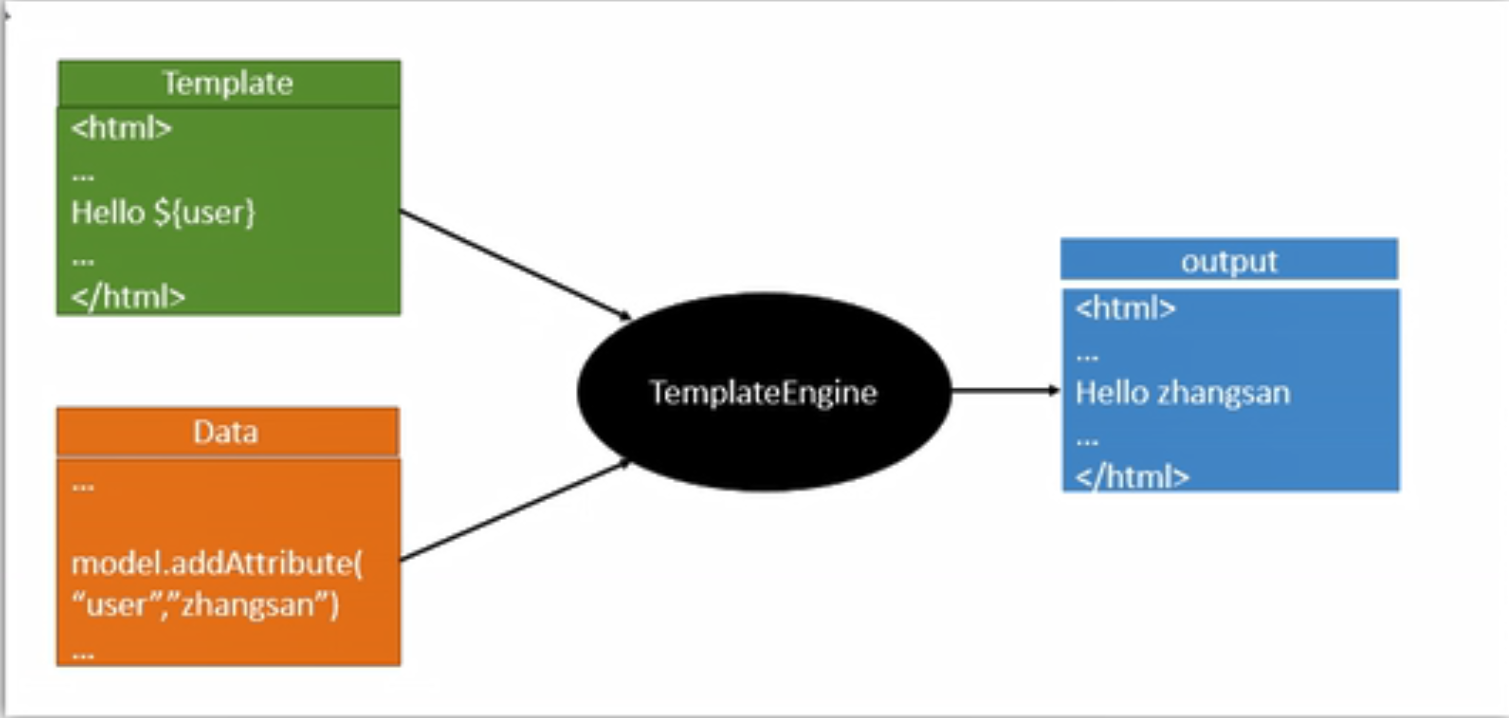Springboot 学习笔记
一、springboot 入门
1、 Spring boot 简介
2、 微服务
谷粒学院 学习idea
3、 环境准备
jdk1.8
maven 3.3以上
idea2017
SpringBoot 1.5.9
maven设置
给maven的settings.xml文件标签添加
profile jdk1.8
IDea设置 build > maven 设置自己的maven 和setting文件
4、Spring hello world
1、 创建一个maven工程(jar)
2、 导入依赖Springboot相关的依赖
<parent>
<groupId>org.springframework.boot</groupId>
<artifactId>spring-boot-starter-parent</artifactId>
<version>1.5.9.RELEASE</version>
</parent>
<dependencies>
<dependency>
<groupId>org.springframework.boot</groupId>
<artifactId>spring-boot-starter-web</artifactId>
</dependency>
</dependencies> <!--可以将应用打包成一个可执行的jar包-->
<build>
<plugins>
<plugin>
<groupId>org.springframework.boot</groupId>
<artifactId>spring-boot-maven-plugin</artifactId>
</plugin>
</plugins>
</build>5、hello 探究
1、POM文件
1.父项目
<parent>
<groupId>org.springframework.boot</groupId>
<artifactId>spring-boot-starter-parent</artifactId>
<version>1.5.9.RELEASE</version>
</parent>
他的父项目是
<parent>
<groupId>org.springframework.boot</groupId>
<artifactId>spring-boot-dependencies</artifactId>
<version>1.5.9.RELEASE</version>
<relativePath>../../spring-boot-dependencies</relativePath>
</parent>
他来真正管理Springboot应用里面的所有依赖版本:Spring Boot的版本仲裁中心:
以后导入依赖默认是不需要写版本。(没有在dependencies中管理的依赖自然需要声明版本号)
2. 导入的依赖
<dependency>
<groupId>org.springframework.boot</groupId>
<artifactId>spring-boot-starter-web</artifactId>
</dependency>spring-boot-srarter-web
springboot场景启动器:导入了web模块正常运行所依赖的组件;
Spring Boot将所有的功能场景都抽取出来,做成一个个的starters(启动器),只需要在项目中引入这些starter相关场景的所有依赖都会导入进来,要用什么功能,就导入什么场景启动器。
2、主程序类,主入口类
@SpringBootApplication
public class better {
public static void main(String[] args) {
SpringApplication.run(better.class,args);
}
}@SpringBootApplication : Spring Boot 应用标注在某个类上,说明这个类是SpringBoot的主配置类,SpringBoot就应该运行这个类的main方法来启动SpringBoot应用。
@Target({ElementType.TYPE})
@Retention(RetentionPolicy.RUNTIME)
@Documented
@Inherited
@SpringBootConfiguration
@EnableAutoConfiguration
@ComponentScan(
excludeFilters = {@Filter(
type = FilterType.CUSTOM,
classes = {TypeExcludeFilter.class}
), @Filter(
type = FilterType.CUSTOM,
classes = {AutoConfigurationExcludeFilter.class}
)}
)
public @interface SpringBootApplication {@SpringBootConfiguration : SpringBoot的配置类;
标注在某个类上,表示这是一个SpringBoot的配置类;
@Configuration:配置类上来标注这个注解;
配置类------配置文件;配置类也是容器中的一个组件:@component
@EnableAutoConfiguration:开启自动配置功能;
以前需要配置的东西,现在SpringBoot帮我们自动配置。
@AutoConfigurationPackage
@Import({EnableAutoConfigurationImportSelector.class})
public @interface EnableAutoConfiguration {@AutoConfigurationPackage:自动配置包
@Import({Registrar.class})
Spring的底层注解@Import,给容器中导入一个组件,导入的组件由Registrar.class
将主配置类(@SpringBootApplication标注的类)下面的包及下面所有组件扫描到Spring容器;
@Import({EnableAutoConfigurationImportSelector.class})
给容器中导入组件?
EnableAutoConfigurationImportSelector:导入那些组件的选择器:
将所有需要导入的组件以全类名的方式返回,这些组件就会被添加到容器中;
会给容器中导入非常多的自动配置类(xxxAutoConfiguration);就是给容器中导入这个场景需要的所有组件,并配置好这些组件;
有了自动配置类,免去手动编写配置注入功能组件等工作;
SpringFactoriesLoader.loadFactoryNames(EnableAutoConfiguration.class,classLoader)从类路径下得META_INF/spring.factories中获取EnableAutoConfiguration制定的值,将这些值作为自动配置陪导入到容器中,自动配置类就生效,帮我们进行自动配置工作。
6、 快速创建SpringBoot
- 默认生成的SpringBoot项目:
- 主程序已经生成好,只需要编辑自己的逻辑
- resources文件夹中的目录结构
- static:保存所有的静态资源;js css images;
- templates: 保存所有的模板页面;(默认jar包,嵌入式tomcat,默认不支持jsp页面),可以使用模板引擎(freemarker,thymeleaf);
- application.properties:SpringBoot应用的配置文件。可以修改一些默认设置。
二、配置文件
1、 配置文件properties比yml优先级高
SpringBoot使用一个全句的配置文件,配置文件名是固定的;
application.properties
application.yml
配置文件的作用:修改SpringBoot自动配置的默认值,SpringBoot在底层都给我们自动配置好了。
YAML, 是/不是一个标记语言
标记语言:
以前的配置文件:xxx.xml
yaml:以数据为中心,比json、xml等更适合做配置文件。
2、YAML语法:
1.基本语法
k: 空格V:表示一对键值对(空格必须有):
以空格的缩进来控制层级关系
server:
port: 8095
path: /hello属性和值也是大小写敏感;
2.值的写法
字面量:普通的值(数字、字符串,布尔)
k: v: 字面直接来写;
字符串默认不用加上单引号或者双引号;
'':会转义特殊字符,特殊字符会被转为一个普通的字符串输出
name: "zhangsan n lisi"
输出:zhangsan n lisi
"":不会转义字符串里面的特殊字符,特殊字符会作为本身想表示的意思
name: "zhangsan n lisi"
输出:zhangsan
lisi
对象(属性和值)(键值对):
k: v :在下一行来写对象的属性和值的关系,注意缩进
对象还是k: v的方式
friends:
lastName: zhangsan
age: 20
数组(list、set):
用-值表示数组中的一个元素
pets:
- cat
- dog
- pigpets: [cat,dog,pig] 3.配置文件值注入
配置文件yml
person:
lastName: zhangsan
age: 18
boss: false
birth: 2018/10/10
maps: {
k1: v1,
k2: 12,
k3: 20
}
lists:
- lisi
- wangwu
dog:
name: 小狗
age: 2javaBean:
/**
*通过@ConfigurationProperties(prefix = "person")注入
*/
@Component
@ConfigurationProperties(prefix = "person")
public class Person {
private String lastName;
private Integer age;
private Boolean boos;
private Date birth;
private Map<String,Object> maps;
private List<Object> lists;
private Dog dog;我们可以导入pom.xml配置文件处理器,这样编写yml就会有提示
<dependency>
<groupId>org.springframework.boot</groupId>
<artifactId>spring-boot-configuration-processor</artifactId>
<optional>true</optional>
</dependency>@Value("${person.last-name}")
private String lastName;
@Value("#{11*2}")
private Integer age;
@Value("true")
private Boolean boos;1.idea中yml配置文件默认utf-8有可能乱码
2.@value获取值与@configurationProperties获取值比较
| @configurationProperties | @value | |
|---|---|---|
| 功能 | 批量注入配置文件中的属性 | 一个个指定 |
| 松散绑定 | 支持 | 不支持 |
| SpEL | 不支持 | 支持(#/${}...) |
| JSR303数据校验 | 支持 | 不支持 |
| 支持 | 不支持 |
配置文件yml还是properties他们都能获取到值。
如果说,我们只是在某个业务逻辑中,需要获取一下配置文件中的某项值,我们使用@value
如果为list或map或专门编写了一个javaBean来和配置文件进行映射,使用@ConfigurationProperties。
3.配置文件注入值数据校验
@ConfigurationProperties(prefix = "person")
@Validated4.@PropertySource与ImportResource
/**
* 将配置文件中配置的每一个属性的值,映射到这个组件中
* @ConfigurationProperties: 告诉springboot将奔雷中的所有属性和配置文件中的相关的配置进行绑定
* prefix = "persion" : 配置文件中哪个下面的所有属性进行一一映射
* 只有这个组件是容器中的组件,才能使用容器提供的ConfigurationProperties功能
* @ConfigurationProperties(prefix = "person")默认从全局配置文件中获取值;
*/
@PropertySource(value = {"classpath:person.properties"})
@Component
@ConfigurationProperties(prefix = "person")
@Validated
public class Person {
// @Value("${person.last-name}")
private String lastName;
// @Value("#{11*2}")
private Integer age;
// @Value("true")
private Boolean boos;
private Date birth;
private Map<String,Object> maps;
private List<Object> lists;
private Dog dog;@ImportResource: 导入Spring的配置文件,让配置文件里面的内容生效;
SpringBoot里面没有Spirng的配置文件,我们自己编写的配置文件,也不能自动识别;
想让Spring的配置文件生效,加载进来@importResource,标注在一个配置类上
@ImportResource(locations = {"classpath:beans.xml"})<?xml version="1.0" encoding="UTF-8"?>
<beans xmlns="http://www.springframework.org/schema/beans"
xmlns:xsi="http://www.w3.org/2001/XMLSchema-instance"
xsi:schemaLocation="http://www.springframework.org/schema/beans http://www.springframework.org/schema/beans/spring-beans.xsd">
<bean id="helloService" class="com.better.springhelloword.service.HelloService"></bean>
</beans>SpringBoot推荐给容器中添加组件的方式:
1.配置类===Spring配置文件
2.使用@Bean给容器中添加组件
/**
*@Configuration:指明当前类是一个配置类,就是来替代之前的Spring配置文件
* 在配置文件中用<bean><bean/> 标签添加组件
*/
@Configuration
public class MyAppConfig {
//将方法的返回值添加到容器中
@Bean
public HelloService helloService(){
System.out.println("配置类:");
return new HelloService();
}
}4、配置文件占位符
1.随机数
person.last-name=李四${random.uuid}
person.age=${random.int}2.占位符获取之前的配置的值,如果没有可以用:指定默认值
person.dog.name=${person.last-name}_dog
person.dog.name=${person.hello:hello}_dog5、Profile
1、多Profile文件
我们在主配置文件编写的时候,文件名可以是application-{profile}.properties/yml
2、yml支持多文档块方式
server:
port: 8095
spring:
profiles:
active: prod
---
server:
port: 8080
spring:
profiles: dev
---
server:
port: 8081
spring:
profiles: prod3、激活指定profile
创建application-dev.properties
1.在配置文件(application.properties)中指定spring.profiles.active=dev
2.命令行参数:program arguments:
--spring.profiles.active=dev
运行jar包
java -jar spring-boot-02-config-0.1.1.jar --spring.profiles.active=dev
3.虚拟机参数 VM options:
-Dspring.profiles.active=dev
6、配置文件加载位置(高>低)
-file:../config/
-file:../
-classpath:../config/
-classpath:../
高优先级的配置会覆盖低优先级的配置。(所有配置文件都会加载,会形成互补机制)
我们还可以通过spring.config.location来改变默认的配置文件位置
项目打包好之后,我们可以使用命令行参数的形式,启动项目的时候来指定配置文件的新位置;指定配置文件和默认加载的这些配置文件共同起作用形成互补配置;
7、外部配置加载顺序
SpringBoot也可以从以下位置加载配置;优先级从高到低,高优先级的配置覆盖低优先级的配置,所有的配置会形成互补配置。
java -jar spring.jar --参数 --参数...
多个参数可以用空格分开

由jar包外向jar包内进行寻找;优先加载带profile,再来加载不带profile的。
8、自动配置原理
配置文件到底能写什么?怎么写?自动配置原理;
springboot官方文档
1、自动配置原理;
1) SpringBoot启动的时候加载主配置类,开启了自动配置功能==@EnableAutoConfiguration==
2) @EnableAutoConfiguration作用:
利用AutoConfigurationImportSelector给容器中导入了一些组件
可以查看selectImports()方法的内容;
==参照5.3 快速创建SpringBoot中的自动配置==
有了自动配置类,免去手动编写配置注入功能组件等工作;
SpringFactoriesLoader.loadFactoryNames(EnableAutoConfiguration.class,classLoader)从类路径下得META_INF/spring.factories中获取EnableAutoConfiguration制定的值,将这些值作为自动配置陪导入到容器中,自动配置类就生效,帮我们进行自动配置工作。
# Auto Configure
org.springframework.boot.autoconfigure.EnableAutoConfiguration=
org.springframework.boot.autoconfigure.admin.SpringApplicationAdminJmxAutoConfiguration,
org.springframework.boot.autoconfigure.aop.AopAutoConfiguration,
org.springframework.boot.autoconfigure.amqp.RabbitAutoConfiguration,
org.springframework.boot.autoconfigure.batch.BatchAutoConfiguration,
org.springframework.boot.autoconfigure.cache.CacheAutoConfiguration,
org.springframework.boot.autoconfigure.cassandra.CassandraAutoConfiguration,
org.springframework.boot.autoconfigure.cloud.CloudServiceConnectorsAutoConfiguration,
org.springframework.boot.autoconfigure.context.ConfigurationPropertiesAutoConfiguration,
org.springframework.boot.autoconfigure.context.MessageSourceAutoConfiguration,
org.springframework.boot.autoconfigure.context.PropertyPlaceholderAutoConfiguration,
org.springframework.boot.autoconfigure.couchbase.CouchbaseAutoConfiguration,
org.springframework.boot.autoconfigure.dao.PersistenceExceptionTranslationAutoConfiguration,
org.springframework.boot.autoconfigure.data.cassandra.CassandraDataAutoConfiguration,
org.springframework.boot.autoconfigure.data.cassandra.CassandraReactiveDataAutoConfiguration,
org.springframework.boot.autoconfigure.data.cassandra.CassandraReactiveRepositoriesAutoConfiguration,
org.springframework.boot.autoconfigure.data.cassandra.CassandraRepositoriesAutoConfiguration,
org.springframework.boot.autoconfigure.data.couchbase.CouchbaseDataAutoConfiguration,
org.springframework.boot.autoconfigure.data.couchbase.CouchbaseReactiveDataAutoConfiguration,
org.springframework.boot.autoconfigure.data.couchbase.CouchbaseReactiveRepositoriesAutoConfiguration,
org.springframework.boot.autoconfigure.data.couchbase.CouchbaseRepositoriesAutoConfiguration,
org.springframework.boot.autoconfigure.data.elasticsearch.ElasticsearchAutoConfiguration,
org.springframework.boot.autoconfigure.data.elasticsearch.ElasticsearchDataAutoConfiguration,
org.springframework.boot.autoconfigure.data.elasticsearch.ElasticsearchRepositoriesAutoConfiguration,
org.springframework.boot.autoconfigure.data.jdbc.JdbcRepositoriesAutoConfiguration,
org.springframework.boot.autoconfigure.data.jpa.JpaRepositoriesAutoConfiguration,
org.springframework.boot.autoconfigure.data.ldap.LdapRepositoriesAutoConfiguration,
org.springframework.boot.autoconfigure.data.mongo.MongoDataAutoConfiguration,
org.springframework.boot.autoconfigure.data.mongo.MongoReactiveDataAutoConfiguration,
org.springframework.boot.autoconfigure.data.mongo.MongoReactiveRepositoriesAutoConfiguration,
org.springframework.boot.autoconfigure.data.mongo.MongoRepositoriesAutoConfiguration,
org.springframework.boot.autoconfigure.data.neo4j.Neo4jDataAutoConfiguration,
org.springframework.boot.autoconfigure.data.neo4j.Neo4jRepositoriesAutoConfiguration,
org.springframework.boot.autoconfigure.data.solr.SolrRepositoriesAutoConfiguration,
org.springframework.boot.autoconfigure.data.redis.RedisAutoConfiguration,
org.springframework.boot.autoconfigure.data.redis.RedisReactiveAutoConfiguration,
org.springframework.boot.autoconfigure.data.redis.RedisRepositoriesAutoConfiguration,
org.springframework.boot.autoconfigure.data.rest.RepositoryRestMvcAutoConfiguration,
org.springframework.boot.autoconfigure.data.web.SpringDataWebAutoConfiguration,
org.springframework.boot.autoconfigure.elasticsearch.jest.JestAutoConfiguration,
org.springframework.boot.autoconfigure.elasticsearch.rest.RestClientAutoConfiguration,
org.springframework.boot.autoconfigure.flyway.FlywayAutoConfiguration,
org.springframework.boot.autoconfigure.freemarker.FreeMarkerAutoConfiguration,
org.springframework.boot.autoconfigure.gson.GsonAutoConfiguration,
org.springframework.boot.autoconfigure.h2.H2ConsoleAutoConfiguration,
org.springframework.boot.autoconfigure.hateoas.HypermediaAutoConfiguration,
org.springframework.boot.autoconfigure.hazelcast.HazelcastAutoConfiguration,
org.springframework.boot.autoconfigure.hazelcast.HazelcastJpaDependencyAutoConfiguration,
org.springframework.boot.autoconfigure.http.HttpMessageConvertersAutoConfiguration,
org.springframework.boot.autoconfigure.http.codec.CodecsAutoConfiguration,
org.springframework.boot.autoconfigure.influx.InfluxDbAutoConfiguration,
org.springframework.boot.autoconfigure.info.ProjectInfoAutoConfiguration,
org.springframework.boot.autoconfigure.integration.IntegrationAutoConfiguration,
org.springframework.boot.autoconfigure.jackson.JacksonAutoConfiguration,
org.springframework.boot.autoconfigure.jdbc.DataSourceAutoConfiguration,
org.springframework.boot.autoconfigure.jdbc.JdbcTemplateAutoConfiguration,
org.springframework.boot.autoconfigure.jdbc.JndiDataSourceAutoConfiguration,
org.springframework.boot.autoconfigure.jdbc.XADataSourceAutoConfiguration,
org.springframework.boot.autoconfigure.jdbc.DataSourceTransactionManagerAutoConfiguration,
org.springframework.boot.autoconfigure.jms.JmsAutoConfiguration,
org.springframework.boot.autoconfigure.jmx.JmxAutoConfiguration,
org.springframework.boot.autoconfigure.jms.JndiConnectionFactoryAutoConfiguration,
org.springframework.boot.autoconfigure.jms.activemq.ActiveMQAutoConfiguration,
org.springframework.boot.autoconfigure.jms.artemis.ArtemisAutoConfiguration,
org.springframework.boot.autoconfigure.groovy.template.GroovyTemplateAutoConfiguration,
org.springframework.boot.autoconfigure.jersey.JerseyAutoConfiguration,
org.springframework.boot.autoconfigure.jooq.JooqAutoConfiguration,
org.springframework.boot.autoconfigure.jsonb.JsonbAutoConfiguration,
org.springframework.boot.autoconfigure.kafka.KafkaAutoConfiguration,
org.springframework.boot.autoconfigure.ldap.embedded.EmbeddedLdapAutoConfiguration,
org.springframework.boot.autoconfigure.ldap.LdapAutoConfiguration,
org.springframework.boot.autoconfigure.liquibase.LiquibaseAutoConfiguration,
org.springframework.boot.autoconfigure.mail.MailSenderAutoConfiguration,
org.springframework.boot.autoconfigure.mail.MailSenderValidatorAutoConfiguration,
org.springframework.boot.autoconfigure.mongo.embedded.EmbeddedMongoAutoConfiguration,
org.springframework.boot.autoconfigure.mongo.MongoAutoConfiguration,
org.springframework.boot.autoconfigure.mongo.MongoReactiveAutoConfiguration,
org.springframework.boot.autoconfigure.mustache.MustacheAutoConfiguration,
org.springframework.boot.autoconfigure.orm.jpa.HibernateJpaAutoConfiguration,
org.springframework.boot.autoconfigure.quartz.QuartzAutoConfiguration,
org.springframework.boot.autoconfigure.reactor.core.ReactorCoreAutoConfiguration,
org.springframework.boot.autoconfigure.security.servlet.SecurityAutoConfiguration,
org.springframework.boot.autoconfigure.security.servlet.SecurityRequestMatcherProviderAutoConfiguration,
org.springframework.boot.autoconfigure.security.servlet.UserDetailsServiceAutoConfiguration,
org.springframework.boot.autoconfigure.security.servlet.SecurityFilterAutoConfiguration,
org.springframework.boot.autoconfigure.security.reactive.ReactiveSecurityAutoConfiguration,
org.springframework.boot.autoconfigure.security.reactive.ReactiveUserDetailsServiceAutoConfiguration,
org.springframework.boot.autoconfigure.sendgrid.SendGridAutoConfiguration,
org.springframework.boot.autoconfigure.session.SessionAutoConfiguration,
org.springframework.boot.autoconfigure.security.oauth2.client.servlet.OAuth2ClientAutoConfiguration,
org.springframework.boot.autoconfigure.security.oauth2.client.reactive.ReactiveOAuth2ClientAutoConfiguration,
org.springframework.boot.autoconfigure.security.oauth2.resource.servlet.OAuth2ResourceServerAutoConfiguration,
org.springframework.boot.autoconfigure.security.oauth2.resource.reactive.ReactiveOAuth2ResourceServerAutoConfiguration,
org.springframework.boot.autoconfigure.solr.SolrAutoConfiguration,
org.springframework.boot.autoconfigure.task.TaskExecutionAutoConfiguration,
org.springframework.boot.autoconfigure.task.TaskSchedulingAutoConfiguration,
org.springframework.boot.autoconfigure.thymeleaf.ThymeleafAutoConfiguration,
org.springframework.boot.autoconfigure.transaction.TransactionAutoConfiguration,
org.springframework.boot.autoconfigure.transaction.jta.JtaAutoConfiguration,
org.springframework.boot.autoconfigure.validation.ValidationAutoConfiguration,
org.springframework.boot.autoconfigure.web.client.RestTemplateAutoConfiguration,
org.springframework.boot.autoconfigure.web.embedded.EmbeddedWebServerFactoryCustomizerAutoConfiguration,
org.springframework.boot.autoconfigure.web.reactive.HttpHandlerAutoConfiguration,
org.springframework.boot.autoconfigure.web.reactive.ReactiveWebServerFactoryAutoConfiguration,
org.springframework.boot.autoconfigure.web.reactive.WebFluxAutoConfiguration,
org.springframework.boot.autoconfigure.web.reactive.error.ErrorWebFluxAutoConfiguration,
org.springframework.boot.autoconfigure.web.reactive.function.client.ClientHttpConnectorAutoConfiguration,
org.springframework.boot.autoconfigure.web.reactive.function.client.WebClientAutoConfiguration,
org.springframework.boot.autoconfigure.web.servlet.DispatcherServletAutoConfiguration,
org.springframework.boot.autoconfigure.web.servlet.ServletWebServerFactoryAutoConfiguration,
org.springframework.boot.autoconfigure.web.servlet.error.ErrorMvcAutoConfiguration,
org.springframework.boot.autoconfigure.web.servlet.HttpEncodingAutoConfiguration,
org.springframework.boot.autoconfigure.web.servlet.MultipartAutoConfiguration,
org.springframework.boot.autoconfigure.web.servlet.WebMvcAutoConfiguration,
org.springframework.boot.autoconfigure.websocket.reactive.WebSocketReactiveAutoConfiguration,
org.springframework.boot.autoconfigure.websocket.servlet.WebSocketServletAutoConfiguration,
org.springframework.boot.autoconfigure.websocket.servlet.WebSocketMessagingAutoConfiguration,
org.springframework.boot.autoconfigure.webservices.WebServicesAutoConfiguration,
org.springframework.boot.autoconfigure.webservices.client.WebServiceTemplateAutoConfiguration3)每一个自动配置了进行自动配置功能
4)以HttpEncodingAutoConfiguration为例解释自动配置原理。
@Configuration //表示这是一个配置类,以前编写的配置文件一样,也可以给容器中添加组件
@EnableConfigurationProperties(HttpProperties.class) //启动ConfigurationProperties功能,将配置文件中对应的值和HtppEncodingProperties绑定起来;
@ConditionalOnWebApplication(type = ConditionalOnWebApplication.Type.SERVLET)//Spring底层的注解,根据不同的标间,如果满足指定的条件,整个配置类里面的配置就会生效 判断是否web应用,是就生效
@ConditionalOnClass(CharacterEncodingFilter.class)//判断当前项目有没有这个类,CharacterEncodingFilter:SpringMVC中进行乱码解决的过滤器
@ConditionalOnProperty(prefix = "spring.http.encoding", value = "enabled", matchIfMissing = true)//判断配置文件中是或否存在某个配置,spring.http.encoding.enabled,如果不存在判断也是成立的
public class HttpEncodingAutoConfiguration {
//只有一个有残构造器的情况下,参数的值就会从容器中拿
public HttpEncodingAutoConfiguration(HttpProperties properties) {
this.properties = properties.getEncoding();
}
@Bean //给容器中添加一个组件,这个组件的某些值从properties中获取
@ConditionalOnMissingBean
public CharacterEncodingFilter characterEncodingFilter() {
CharacterEncodingFilter filter = new OrderedCharacterEncodingFilter();
filter.setEncoding(this.properties.getCharset().name());
filter.setForceRequestEncoding(this.properties.shouldForce(Type.REQUEST));
filter.setForceResponseEncoding(this.properties.shouldForce(Type.RESPONSE));
return filter;
}根据当前不同的条件判断,决定这个配置类是否生效
一旦这个配置类生效,这个属性类就会给容器中添加各种组件,这些组件的属性是从对饮的properties类中获取的,这些类里面的每个属性又是和配置类绑定的,
5) 所有在配置文件中能配置的属性都是在xxxproperties类中封装着,配置文件能配置什么可以参照某个功能对应的属性类
@ConfigurationProperties(prefix = "spring.http") //从配置文件中获取指定的值和bean的属性进行绑定
public class HttpProperties {2、细节
1. @conditional派生注解(Spring注解版原生的@conditional作用)
作用:必须是@conditional指定的条件成立,才给容器中添加组件,配置类里面的所有内容才生效。

自动配置类必须在一定的条件下才能生效。
如何查看生效的配置类:
我们可以通过启用debug=true属性,来让控制台答应自动配置报告,这样我们就可以很方便的知道哪些自动配置类生效。
Positive matches: 自动配置类启用的自动配置类
Negative matches:自动配置类未启用的自动配置类
21日志
四、SpringBoot与web开发
1、使用SpringBoot:
1)创建SpringBoot应用,选中我们需要的模块;
2)SpringBoot已经默认将这些场景配置好了,只需要在配置文件中指定少量配置,就可以运行起来
3) 自己编写业务代码
自动配置原理?
这个场景SpringBoot帮我们配置了什么?能不能修改?能修改哪些配置,能不能扩展?
xxxAutoConfiguration:帮我们给容器中自动配置组件
xxxProperties:配置类来封装配置文件的内容 2、SpringBoot对静态资源的映射规则
@ConfigurationProperties(prefix = "spring.resources", ignoreUnknownFields = false)
public class ResourceProperties {
// 可以设置和静态资源有关的参数,缓存时间等
private static final String[] CLASSPATH_RESOURCE_LOCATIONS = {
"classpath:/META-INF/resources/", "classpath:/resources/",
"classpath:/static/", "classpath:/public/" };
@Override//映射所有静态资源
public void addResourceHandlers(ResourceHandlerRegistry registry) {
if (!this.resourceProperties.isAddMappings()) {
logger.debug("Default resource handling disabled");
return;
}
Duration cachePeriod = this.resourceProperties.getCache().getPeriod();
CacheControl cacheControl = this.resourceProperties.getCache()
.getCachecontrol().toHttpCacheControl();
if (!registry.hasMappingForPattern("/webjars/**")) {
customizeResourceHandlerRegistration(registry
.addResourceHandler("/webjars/**")
.addResourceLocations("classpath:/META-INF/resources/webjars/")
.setCachePeriod(getSeconds(cachePeriod))
.setCacheControl(cacheControl));
}
String staticPathPattern = this.mvcProperties.getStaticPathPattern();
if (!registry.hasMappingForPattern(staticPathPattern)) {
customizeResourceHandlerRegistration(
registry.addResourceHandler(staticPathPattern)
.addResourceLocations(getResourceLocations(
this.resourceProperties.getStaticLocations()))
.setCachePeriod(getSeconds(cachePeriod))
.setCacheControl(cacheControl));
}
}
//映射所有图标路径 "**/favicon.ico"
@Bean
public SimpleUrlHandlerMapping faviconHandlerMapping() {
SimpleUrlHandlerMapping mapping = new SimpleUrlHandlerMapping();
mapping.setOrder(Ordered.HIGHEST_PRECEDENCE + 1);
mapping.setUrlMap(Collections.singletonMap("**/favicon.ico",
faviconRequestHandler()));
return mapping;
}
//映射欢迎首页
@Bean
public WelcomePageHandlerMapping welcomePageHandlerMapping(
ApplicationContext applicationContext) {
return new WelcomePageHandlerMapping(
new TemplateAvailabilityProviders(applicationContext),
applicationContext, getWelcomePage(),
this.mvcProperties.getStaticPathPattern());
}1) 所有/webjars/都去classpath:/META-INF/resources/webjars/找资源;
webjars:以jar包的方式引入静态资源;
2) “/”访问当前项目的任何资源(静态资源的文件夹)
"classpath:/META-INF/resources/",
"classpath:/resources/",
"classpath:/static/",
"classpath:/public/"
"/" 当前项目的根路径如果自定义了,默认的路径就失效
localhost:8080/abc 去类路径下找abc
http://localhost:8005/static/admin/css/page.css
3) 欢迎页;静态资源文件夹下得所有index.html页面,被“/”映射;
localhost:8080 / 找资源下的index页面
4)所有页面下“/favicon.ico” 都是在静态资源文件下找‘
3、模板引擎
JSP、Velocity、Freemarker、Thymeleaf

Thymeleaf:语法更简单,功能更强大;
1) 引入Thymeleaf;
<dependency>
<groupId>org.springframework.boot</groupId>
<artifactId>spring-boot-starter-thymeleaf</artifactId>
</dependency>可以通过手动修改版本,
2)Thymeleaf使用&语法
public class ThymeleafProperties {
private static final Charset DEFAULT_ENCODING = Charset.forName("UTF-8");
private static final MimeType DEFAULT_CONTENT_TYPE = MimeType.valueOf("text/html");
public static final String DEFAULT_PREFIX = "classpath:/templates/";
public static final String DEFAULT_SUFFIX = ".html";
//只要我们把Html页面放在classpaath:/templates/,thymeleaf就能自动渲染//只要我们把Html页面放在classpaath:/templates/,thymeleaf就能自动渲染
- 还没有人评论,欢迎说说您的想法!





 客服
客服


